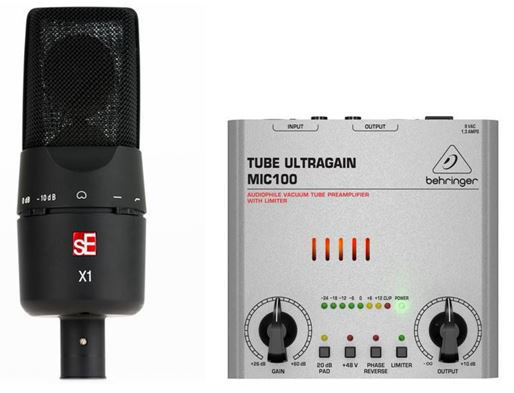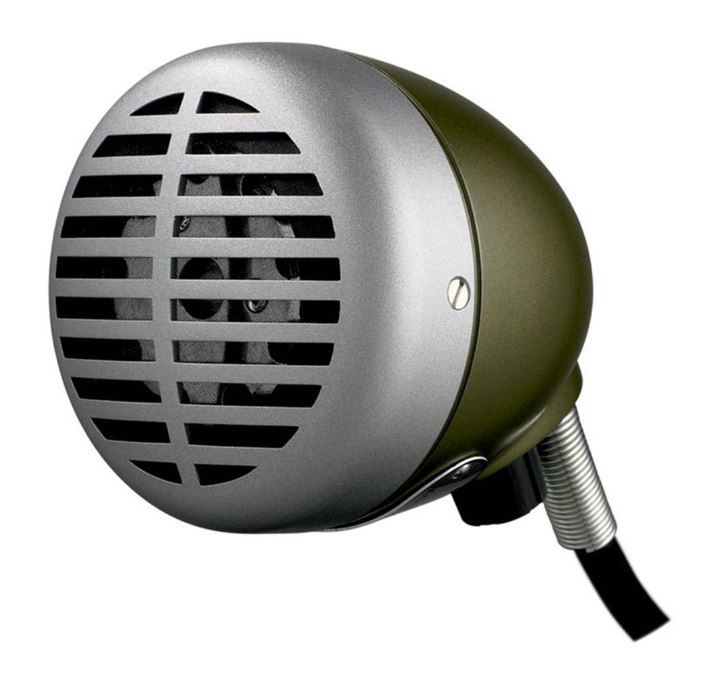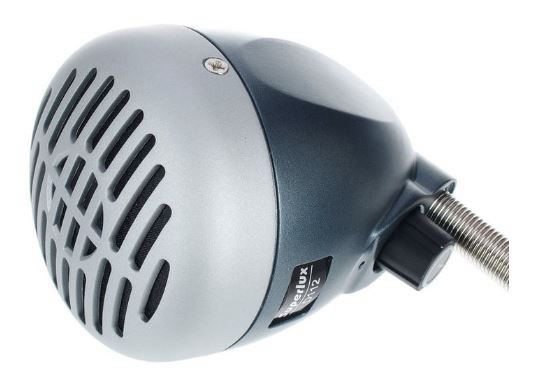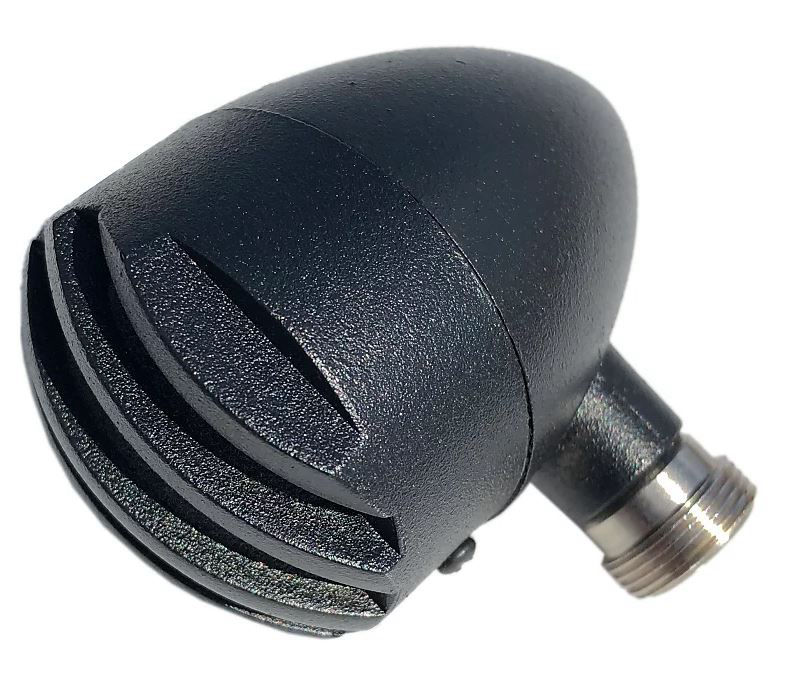

You have to buy a microphone for the harmonica and you wonder which could be the best? Have you seen several models, but are you undecided on which to choose? In this article I will explain something important that will lead you to select your microphone for harmonica without any doubt. If you haven’t read my article about harmonica amplification in general, please do so at this address: How to amplify the harmonica.
Why buy a harmonica microphone? There are basically two motivations: recording what we play or playing live. Depending on the needs we have, we can buy microphones of different types, and depending on the type of sound we want to get there are microphone models more suitable than others. I’ll tell you at once that today there is no microphone whose heart (capturing element) has been designed for use with the harmonica. As with amplifiers and other accessories such as pedals for effects, there are modifications of objects used for other purposes to make them more effective with our instrument.
For example, in the case of mics it is not so much the capsule or the membrane, that is personalized, instead, is the shape of the microphone to increase the comfort of use when holding it in hand together with the harmonica. Only recently a manufacturer has put on the market an object whose element has been adapted to the use with the blues harp, this model you will find out at the end of this article.
After this little dissertation, we return to the subject: a microphone is an object that captures sound waves and transforms it into an electrical signal. When what we play goes through the element there is a modification of the sound that depends on some characteristics of the microphone itself; let’s consider three of them that are fundamental:
The first variable is called ‘frequency response’ and heavily determines the sound, the greater this variable the more the result will be faithful and realistic. An example of a wide frequency response microphone is the one used to record voices in recording studios for singing or speaking.
The second important variable to define the quality of a microphone is the ‘headroom’, or how much sound pressure the transduction organ can tolerate before distorting the sound. A higher headroom allows for greater dynamics (ability to pick up low and high volumes and thus better reproduce the nuances of sound).
The third variable that we consider when choosing a microphone is called ‘noise signal ratio’. This indicates the minimum level of the signal necessary to avoid hearing the background noise of the system. The higher the signal noise ratio the better it is for our microphone and the background noise will be less noticeable.
Now don’t be afraid, you won’t have to get a degree in engineering to buy the microphone for your harmonica, but knowing these variables, especially the first one, you can decide on which device to orient yourself with less doubts. Now let’s see what are the two main types of microphone transducers, also called elements. You’ve heard of capsules, membranes, or crystals, what is it?
Let’s start from the most common type of element, the dynamic one: in this type of element there is a diaphragm (also called membrane) that vibrates when hit by sound waves. The diaphragm is connected to a coil (an electrical conductor) which, moving with it, generates current; to do this, the coil is immersed in a magnetic field. This type of microphone can be very cheap or expensive, ranging from a few dollars to several hundreds and, among its features we find good immunity to mechanical noises, such as those due to movements as we hold it, as well as good resistance to sound pressure. Dynamic microphones are used for instruments, for voice and for many other applications, they are basically very versatile.
The second most common type of microphone element is called condenser: the condenser microphone needs an electrical power supply called ‘phantom’, usually to have this power supply a mixer is required, or an audio card, as well as a microphone pre-amp that feeds the microphone and brings the signal to the audio system. The capacitor uses the varying effect of its capacity to generate the electrical signal. These microphones are also widely used in recording studios for recording voice and instruments. They typically pick up sound from different directions clearly and produce a very faithful sound.
How do we choose the right microphone for our needs? If we have to record the harmonica we can opt for a nice condenser microphone and get a good clean and faithful sound, then we can treat the latter with computer software and transform it at our convenience (also to get the famous Chicago sound).
If we have to use the microphone to play live, then we also have to evaluate the type of sound we want and make a choice: faithful sound? I use a low-impedance dynamic microphone and an audio amplification system for voice or acoustic instruments. Do I want the ‘Chicago’ sound instead? I will choose a high-impedance bullet microphone that ensures that I decapitate the harmonic sound on the high frequencies. This microphone will connect it to a tube or solid state guitar amplifier, the latter preferably modeling (emulation). If you want to learn more about harmonica amplifiers see my article at the following link:
I bet you’re thinking about “and the impedance where it comes from?” The impedance is a characteristic that concerns the resistance of conductors or electrical components: to us it suffices to know that the bullet microphones are high impedance and to be connected on inputs of high impedance amplifiers, like those for guitar, while the microphones with low impedance are in practice all the other microphones for voice or instrument and must be connected to inputs with low impedance. The low impedance inputs are found in amplifiers for acoustic instruments, PA systems, mixers, sound cards, active speakers. What happens if we connect a low-impedance microphone to a high-impedance input or vice versa? Nothing serious, we simply do not have the right sound quality and volume.
Now let’s take a closer look at some models of microphone good to be paired with the harmonica. Let’s discover the most known standard microphones sold in the world:
Shure SM57 LC: a dynamic microphone with low impedance very well known and widely used for voice but also for instruments. It has a respectable frequency response ranging from 40 Hz to 15 kHz. Its shape is suitable to be held under the harp because the body is quite thin. This microphone is also good for recording and can be connected to audio systems for voice or acoustic instrument. It is not suitable for use with guitar amplifiers. It costs about 150 dollars.

Audix fireball: small microphone to be better held in the hand next to the harmonica. This is also low impedance and has a wide frequency response, from 50 Hz to 16 kHz. Great microphone for voice and instruments, to use with standard audio systems like the model above. The fireball costs about 150 dollars.

SE Electronics X1: This is a condenser mic for voice and acoustic instruments. It has a very wide frequency response ranging from 20 Hz to 20 kHz, in practice it can pick up any frequency spectrum audible by the human ear. It requires a 48V phantom power from a dedicated preamp or a mixer equipped with it. I personally use this microphone for my vocal and harmonica recordings and I have to say that it is a really good device. The cost of the X1 is about 170 dollars, to which, if you do not have a mixer with phantom power must be added another about 50 dollars.

Let’s see some high-impedance bullet microphones:
Shure 520 DX: There is no harmonica player who has never heard of this microphone also called ‘green bullet’. It is large and has the typical microphone shape to play Chicago style performing the ‘cupping’ of the harmonica. It has high impedance to be suitable for guitar amplifiers and a declared frequency response of 50 Hz up to 5 kHz. It is not suitable for getting the true sound of the harmonica or of the voice. This model costs about 130 dollars.

Superlux D112C: this is a cheap bullet-type microphone that costs about 50 dollars. It has a frequency response ranging from 100 Hz to 6 kHz and high impedance, suitable for use with guitar amplifiers. It’s true, the D112C is cheap, but we’re talking about capsules like the ones used in old phones, who’s to say they cost much more?

Bulletini: do you want to spend a little more and have a ‘boutique microphone’? then you can buy this small bullet-type microphone and, according to the manufacturer, specially created for the harmonica. Also, this microphone is high impedance, and its absorbing element is an electrical and mechanical modification of that of a modern microphone for voice. Unfortunately, I did not find any indication about the technical specifications in terms of frequency response, but the manufacturer states that this device produces a richer tone even of low frequencies, so dear to those who seek the Chicago sound.

After this roundup of microphones I just have to make an appointment for the next article and wish you to buy for your harmonica the accessory of your dreams.